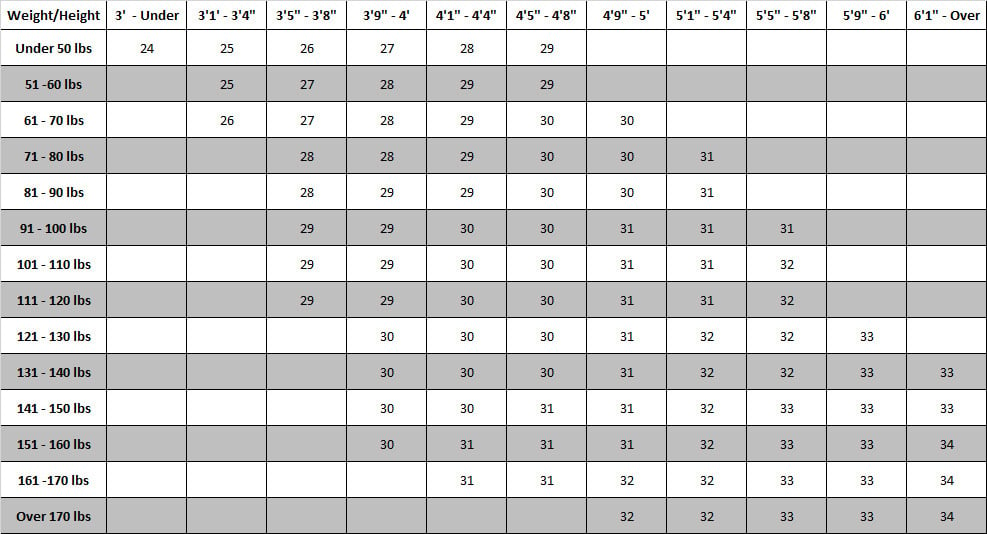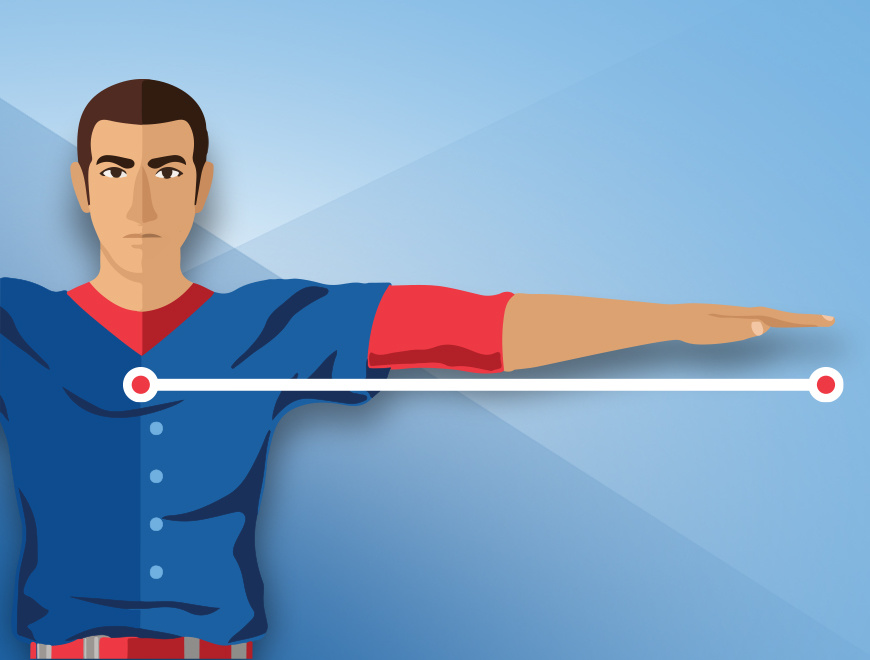Cart
You have no items in your shopping cart
 0
0
You have no items in your shopping cart
Shopping for a baseball bat can be challenging due to the varying advice you can get from all kinds of different sources. This page offers you a comprehensive guide to help you navigate your initial research. We must make clear that none of the charts and methods shown here offer be-all-end-all answers. Rather, they present probable ranges for most players. The final test should always be evaluating swing technique, speed and control the player displays with his bat of choice.
However, this section should allow you to carefully narrow the selection process before you go on and choose your brand and model. Bat technology has evolved considerably in recent years. Bats can be made of wood, alloys, composite or an alloy/composite hybrid. Composite is the latest and most performance inducing material currently used in making bats.
Our guide will help you:
*See section “What is Bat Drop” for an explanation of the term “drop”.
Overall Weight to Height Chart

*Adult players should find a bat that can be swung effortlessly and allow the sweet-spot to pass through the middle of the hitting zone as consistently as possible, according to the player’s favored batter’s box positioning (length range from 32” to 34”).
There are a few different ways to measure a person for the proper bat length, but we prefer one that uses arm length as a barometer. The player should stand and extend his or her arm parallel to the ground to one side. The knob of the bat should be grabbed by the last knuckle of an extended middle finger and the barrel held to the player’s chest. If the bat is the right length, the very end of the barrel should be directly in front of the sternum:

Remember that this is simply a tool to help choose a bat from the store display that the player can then go swing in an appropriate area for further evaluation. As a general rule, junior players should not upgrade to more than an inch more than their current bat length.
Bat categories are determined by what is commonly known as bat drop. Drop weight is the difference between the length (in inches) and weight (in ounces) of the bat, so a bat that is 30 inches long and has a drop weight of -10 will weigh 20 ounces. The bigger the drop weight, the lighter the bat. A lighter bat helps produce more speed, but a heavier bat (for a player strong enough to swing it without any barrel drag) produces more power. That is why a player should always use as heavy a bat as he or she can comfortably swing.

Bats featuring the “USSSA 1.15 BPF” sticker will be legal for USSSA play. These bats vary in barrel size from 2 5/8” to 2 3/4”. The weight drops range from -12 to -5. USSSA bats are NOT legal for use in leagues playing under the new USA Baseball Bat Standard.
Bats with the USA Baseball logo can be used in leagues or tournaments that fall under the “Little Leagues” accreditation. The performance standards set for USA Baseball approved bats are more severe than the USSSA’s, meaning they have less pop. The new USA baseball bats can range in barrel size from 2 1/4” to 2 5/8”. The weight drops can vary from -13.5 to -5. For USSSA players, you should ask if your league allows USA Baseball bats before buying.
This standard is designed to measure the trampoline effect of the bat to the ball on impact, rather than just the exit speed of the ball. This makes BBCOR bats perform more like wood bats. Non wood bats used by players 16 y/o and up should have a league-required -3 weight drop and can range in size from 31” to 34”. A new Baseball Quebec rule for the 2021 season now allows U15 Elite (AA) level players to hit with bats that have a maximum drop of 5 (-5).
The league or tournament you play in will determine which bat regulations you should adhere to when purchasing a fastpitch or slowpitch softball bat. It is best to check your league’s rules and standards before purchasing a bat. For more clarity on softball bat stamps, we would refer you here.
Once you have figured out the proper bat length, drop and insured it falls under league regulations, you can start focusing on performance level. That will be mostly based on the type of material used in the manufacturing of the bat*. Non-wood bats can be divided into three categories, from best to worst performance (and consequently, highest to lowest priced):
*Note that wood bats are mandatory in some higher-level baseball leagues (check your local regulations)
Composite bats are made with a layered fiber material, which makes it easy for the manufacturer to control the weight distribution of the bat. Composite bats can either be balanced (weight is evenly distributed) or end-loaded (the bat has more weight at the end of the barrel, giving it a heavier swing weight), which gives the consumer more options to tailor the bat to his preferred swing style.
Hybrid bats combine a composite handle with an alloy barrel. This design gives the player the advantages provided by composite’s light weight and anti-vibration properties while also benefitting from the cost saving and durable alloy barrel.
Alloy bats, also called metal and aluminum bats, were the first non-wood bats produced on the market. Alloy simply means that the bat is made of a mix of different metals. The composition of that mix determines the bat’s performance level, swing weight and price.
Wood bats are mostly made of: Maple (or Hard Maple), Birch (or Yellow Birch) or Ash. Maple is the hardest type of wood, birch and ash being less dense, therefore considered medium hardness wood species.
There are 5 major distinctions between wood bats and alloy or composite bats:
There are also bats made of Bamboo, which is technically not wood but a plant species. These bats generally offer a lower performance level, but cost less and are more durable, therefore geared more toward recreational players or those looking for a batting cage bat.
Some manufacturers also make Wood Composite (Wood Comp) bats that are made from a mix of different wood layers, which offers more durability. WARNING: Wood Comps are not allowed in certain leagues or tournaments that require strictly pure wood bats.
For more information on hitting with a wood bat, or choosing the right wood bat for you, go to our How to Hit With A Wood Bat blog.
As is the case for baseball bats, softball bat models can be made of composite, alloy, or even wood. The industry however is dominated by 2-piece composite bats, that offer the average player a significant edge in pop, especially once the bat is broken in (after 150 to 200 contacts, as a general rule).
There are many different iterations of the game of softball, but the two most common are Slowpitch and Fastpitch.
Slowpitch and Fastpitch bats are very different from one another. Fastpitch bat fitting is akin to baseball bat fitting (see Bat Buying Guide above).
Slowpitch bats, contrary to Fastpitch, are all the same length, namely 34”. They are also heavier, mainly ranging from 25oz to 28oz. Therefore, Slowpitch bat selection is made according to:
Barrel length affects the bat’s sweet spot. A longer barrel offers more forgiveness on mishits, while a shorter barrel allows for a more explosive trampoline effect when the hit is perfectly centered on a more concentrated sweet spot.
Generally, a power hitter with more experience will prefer a shorter barrel and End-Loaded bat, while a contact hitter going for a high average, or a less experienced player will be more likely to choose a longer barreled and balanced bat.
Note that selecting a Slowpitch bat is a very personal choice and thus the rule of thumb just laid out is not all encompassing. The best way to discover the type of bat that suits you is to try out a wide variety of them. The feel differs greatly from one model to the next, or from one person to another for the same bat. You can visit our Coup Sûr! Batting Cages to sample a selection of the most recently launched bat models.
Different suppliers use a wide variety of terms to identify the weight distribution (or swing weight) of their Slowpitch bats. Since it can be easy to get lost in all that lingo, here is a rundown of each term:
There are a few reasons that explain why two-piece bats are more expensive than one-piece bats. The redeeming feature of two-piece bats is a connection system that serves as a joint between the handle and barrel. This connector has positive feel and performance-based effects.
The feel benefit comes from the dampening of vibrations the joint provides the hitter on contacts. The connector effectively acts as a shock absorber. The performance benefit is derived from added barrel drag and release on approach and contact, stemming from the flex created by the connector between handle and barrel. For that same reason, two-piece bats also offer more forgiveness on off sweet-spot hits.
On the other hand, one-piece bats do provide the more powerful hitters a slight advantage on centered (or barreled) hits, precisely because the stiffness of the bat offers a full energy transfer to ball, with no dampening on contact.
A FEW MAINTENANCE TIPS
“WHICH BAT IS THE BEST?”
Here’s the $1000 question we often get from customers in our shops. The real answer: “The one that suits your swing to a T.” The problem with this answer is that the make and model can be different from one player to the next. To find out, you need to sample them to get a proper feel on contact.
It’s impossible to do that in store, but id you know your level of play and hitting style well enough, there are many social media sources out there to help you out. Some Youtubers are making a career out of trying out all the new bats that are launched for the benefit of their viewers, offering their takes and ratings based on feel, performance, and durability of each model.
For a glimpse of some of those ratings of the latest arrivals, visit our Instagram, where you will also find many EXCLUSIVE images of the latest products, MLB and NCAA baseball/fastpitch lineups with bat model usage, and exciting contests!
Remember, fine-tuned bat-fitting is an art and nothing can replace an expert eye observing the hitter in full motion to ensure you end up purchasing a bat that fits your particular needs. If you have any questions or hesitations as to which bat to buy for you or your kid, don’t hesitate to visit anyone of our three locations. Our hitting experts will be happy to lend you a helping eye!
